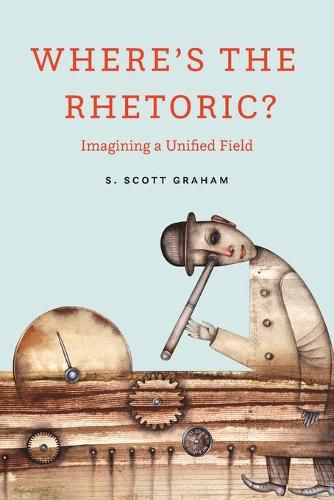Readings Newsletter
Become a Readings Member to make your shopping experience even easier.
Sign in or sign up for free!
You’re not far away from qualifying for FREE standard shipping within Australia
You’ve qualified for FREE standard shipping within Australia
The cart is loading…






This title is printed to order. This book may have been self-published. If so, we cannot guarantee the quality of the content. In the main most books will have gone through the editing process however some may not. We therefore suggest that you be aware of this before ordering this book. If in doubt check either the author or publisher’s details as we are unable to accept any returns unless they are faulty. Please contact us if you have any questions.
The emergence of rhetorical new materialisms and computational rhetorics has provoked something of an existential crisis within rhetorical studies. In Where’s the Rhetoric?, S. Scott Graham tackles this titular question by arguing first that scholarly efforts in rhetorical new materialisms and computational rhetoric be understood as coextensive with longstanding disciplinary commitments in rhetoric. In making this argument, Graham excavates the shared intellectual history of traditional rhetorical inquiry, rhetorical new materialisms, and computational rhetoric with particular emphasis on the works of Carolyn Miller, Kenneth Burke, and Henri Bergson. Building on this foundation, Graham then argues for a more unified approach to contemporary rhetorical inquiry-one that eschews disciplinary demarcations between rhetoric’s various subareas. Specifically, Graham uses his unified field theory to explore 1) the rise of the tweetorial as a parascientific genre, 2) inventional practices in new media design, 3) statistical approaches to understanding biomedical discourse, and 4) American electioneering rhetorics. The book overall demonstrates how seemingly disparate intellectual approaches within rhetoric can be made to speak productively to one another in the pursuit of shared scholarly goals around questions of genre, media, and political discourse-thereby providing a foundation for imagining a more unified field.
$9.00 standard shipping within Australia
FREE standard shipping within Australia for orders over $100.00
Express & International shipping calculated at checkout
This title is printed to order. This book may have been self-published. If so, we cannot guarantee the quality of the content. In the main most books will have gone through the editing process however some may not. We therefore suggest that you be aware of this before ordering this book. If in doubt check either the author or publisher’s details as we are unable to accept any returns unless they are faulty. Please contact us if you have any questions.
The emergence of rhetorical new materialisms and computational rhetorics has provoked something of an existential crisis within rhetorical studies. In Where’s the Rhetoric?, S. Scott Graham tackles this titular question by arguing first that scholarly efforts in rhetorical new materialisms and computational rhetoric be understood as coextensive with longstanding disciplinary commitments in rhetoric. In making this argument, Graham excavates the shared intellectual history of traditional rhetorical inquiry, rhetorical new materialisms, and computational rhetoric with particular emphasis on the works of Carolyn Miller, Kenneth Burke, and Henri Bergson. Building on this foundation, Graham then argues for a more unified approach to contemporary rhetorical inquiry-one that eschews disciplinary demarcations between rhetoric’s various subareas. Specifically, Graham uses his unified field theory to explore 1) the rise of the tweetorial as a parascientific genre, 2) inventional practices in new media design, 3) statistical approaches to understanding biomedical discourse, and 4) American electioneering rhetorics. The book overall demonstrates how seemingly disparate intellectual approaches within rhetoric can be made to speak productively to one another in the pursuit of shared scholarly goals around questions of genre, media, and political discourse-thereby providing a foundation for imagining a more unified field.